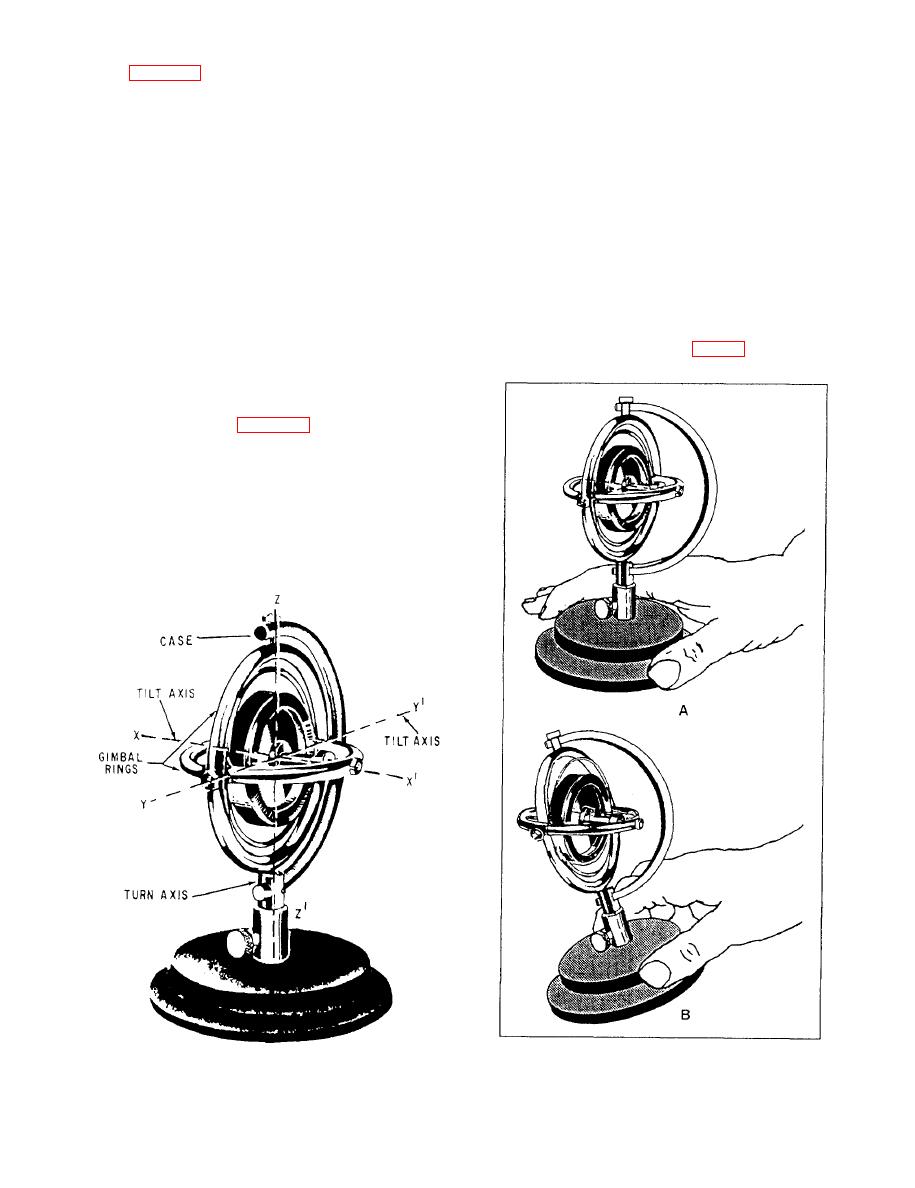 |
|||
|
|
|||
| ||||||||||
|
|
 movement. The spinning mass is provided by a heavy
the second degree of freedom. The outer gimbal ring is
rotor. Figure 4-1 illustrates a free gyroscope. As you can
free to turn about the vertical or Z axis, the third degree
see in the figure, the rotor axle is supported by two
of freedom.
bearings in the horizontal ring,. This ring is supported by
two studs mounted in two bearings in the larger vertical
GYROSCOPIC PROPERTIES
ring. These two rings are called the inner gimbal and
outer gimbal, respectively. The outer gimbal is then
When a gyroscope rotor is spinning, it develops two
mounted with two studs and bearings to a larger frame
characteristics, or properties, that it does not possess
called the case.
when at rest: rigidity of plane and precession. These two
properties make it possible to convert a free gyroscope
The rotor and both gimbals are pivoted and balanced
into a gyrocompass.
about their axes. The axes (marked X, Y, and Z) are
perpendicular to each other, and they intersect at the
Rigidity of Plane
center of gravity of the rotor. The bearings of the rotor
and two gimbals are essentially frictionless and have
When the rotor of the gyroscope is set spinning with
negligible effect on the operation of the gyroscope.
its axle pointed in one direction (fig. 4-2, view A), it will
THREE DEGREES OF FREEDOM
As you can see in figure 4-1, the mounting of the
gimbals allows movement in three separate directions,
or three degrees of freedom: (1) freedom to spin, (2)
freedom to tilt, and (3) freedom to turn. The three
degrees of freedom allow the rotor to assume any
position within the case. The rotor is free to spin on its
own axis, or the X axis, the first degree of freedom. The
inner gimbal is free to tilt about the horizontal or Y axle,
|
|
Privacy Statement - Press Release - Copyright Information. - Contact Us |